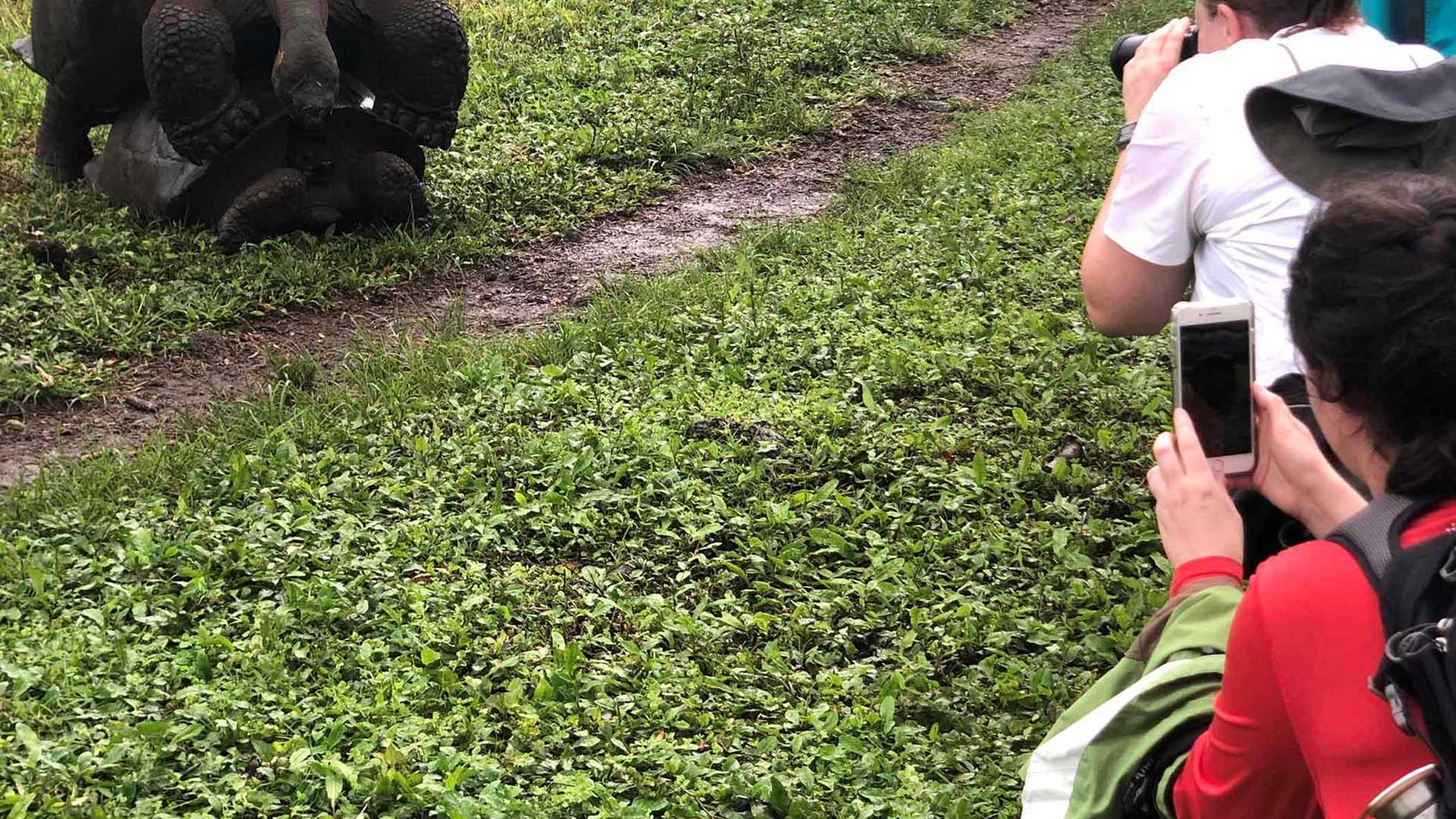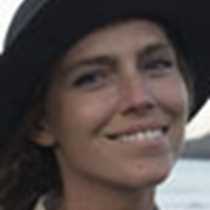Guests onboard National Geographic Endeavour II spent the entire day exploring the island of Santa Cruz. We kicked off the day with a visit to the Charles Darwin Research Station. While we were particularly interested in the giant tortoise captive breeding center – this program is doing important work to repatriate captivity-bred giant tortoises to the islands from which their species arose – we also discussed some of the other important research programs aimed at reforesting native and endemic plants and eradicating or controlling invasive species. Galapagos Verde 2050 is an important program aimed at reforesting the driest islands of Galapagos so as to revert these ecosystems to the vegetative landscapes they once were. Scientists are also studying hormonal compounds that might repel one of the most destructive invasive to Darwin’s finches, philornis. After our visit to the Charles Darwin Research Center, we traveled to the highlands of Santa Cruz.
On our way to the highlands, we discussed some of the human history and culture of Galapagos. Once we arrived to the Trapiche Farm, guests enjoyed demonstrations of how this small, family-run farm produces various products. Some guests even participated in some of the farm work! We saw how they produce sugar cane juice, molasses, raw sugar, chocolate, and sugar cane rum. Guests enjoyed samples of each product. After our visit to the Trapiche Farm, we traveled to Aquelarre, a restaurant situated on an idyllic farm.
In the afternoon, guests traveled to El Chato II to observe the Santa Cruz giant tortoise. This farm is privately owned and just so happens to make provide prime habitat for the giant tortoises. This is an excellent opportunity to take photographs and discuss the evolutionary history and ecology of these unique creatures. The surprise of the afternoon was when we were lucky enough to witness these animals mating! Giant tortoises mate primarily during the wet months, December through April, when there is sufficient vegetation in the lowlands where the females must migrate to nest. They have developed this strategy because the vegetation in the highlands is much too dense for them to dig, whereas the softer sediments of the lowlands make for prime nesting area. We also walked through a lava tunnel, during which guests learned about the formation of the tunnel. After our visit to El Chato II, guests had the option to remain in the port town.
In the evening, local artisans boarded the ship and demonstrated their crafts for guests. After dinner, local musicians and dancers from Santa Cruz Island came onboard and put on a beautiful show. It was a wonderful way to end a day full of unique wildlife and local culture.







